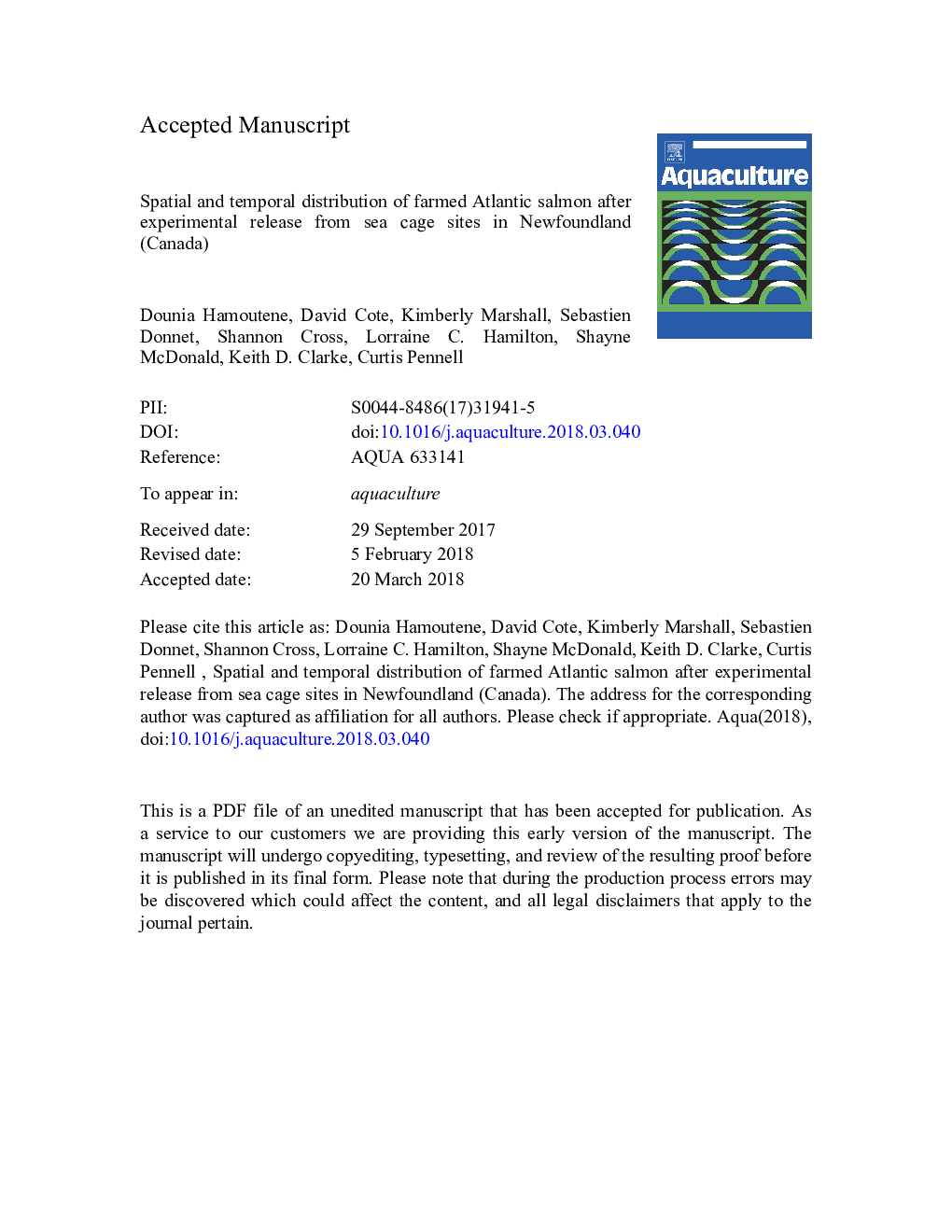| Article ID | Journal | Published Year | Pages | File Type |
|---|---|---|---|---|
| 8493218 | Aquaculture | 2018 | 40 Pages |
Abstract
In this study, a series of experimental releases of aquaculture fish were conducted to simulate escapes in a Canadian fjord (Fortune Bay, Newfoundland and Labrador) and investigate the hierarchical influence of fish size, season, and release location on dispersal patterns and residency time within the fjord. The behaviour of farmed salmon on the south coast of Newfoundland shared qualitative similarities to other regions of the world despite considerable differences in climate, geography and strain. Our results show the following: 1) fast dispersal times, 2) season-specific movement responses, and 3) infrequent migrations to the open ocean. Since animals were not detected beyond a few weeks it was assumed that most individuals experienced natural mortality within the fjord of Fortune Bay, likely due to predation and starvation. Negative interactions of escaped farmed salmon are therefore likely to be largely contained within the fjord for short temporal durations.
Keywords
Related Topics
Life Sciences
Agricultural and Biological Sciences
Aquatic Science
Authors
Dounia Hamoutene, David Cote, Kimberly Marshall, Sebastien Donnet, Shannon Cross, Lorraine C. Hamilton, Shayne McDonald, Keith D. Clarke, Curtis Pennell,
